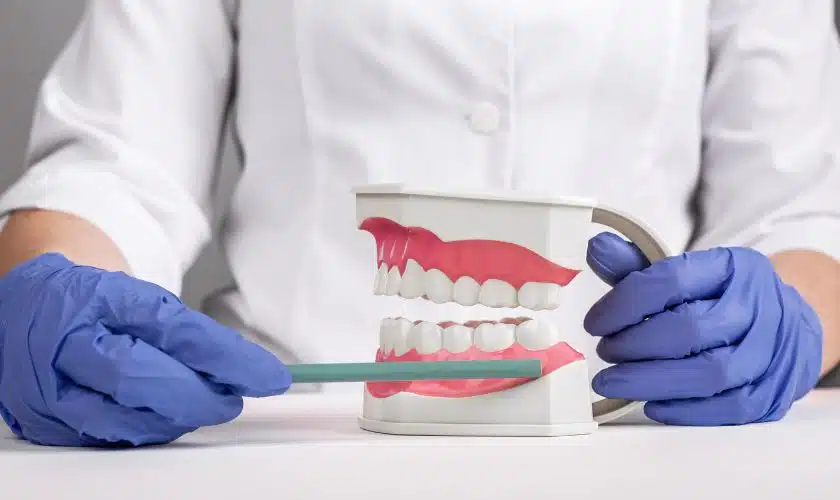Key Takeaways:
– Digital imaging has dramatically improved diagnostics in dentistry.
– Electronic Health Records (EHR) are revolutionizing patient care.
– 3D printing provides a leap forward in custom dental solutions.
– Teledentistry offers increased accessibility to dental services.
– Advanced software is streamlining administrative tasks in dental practices.
– Laser dentistry provides less invasive treatment options.
– Artificial intelligence (AI) is enhancing diagnostic accuracy and predictive care.
– The importance of cybersecurity is growing within digital dentistry.
– Future technology will continue to innovate and improve dental care.
Table of Contents:
- The Evolution of Digital Imaging in Dental Practices
- Revolutionizing Patient Records with Electronic Health Records (EHR)
- The Impact of 3D Printing in Dentistry
- Teledentistry: Remote Care for Better Accessibility
- Software Advancements: Streamlining Administrative Tasks
- Laser Dentistry: A Less Invasive Treatment Alternative
- AI in Diagnostics: Enhancing Accuracy and Predictive Care
- Continuing Education: Keeping Up with the Pace of Technological Change
- Addressing Cybersecurity in Dental Practices
- The Future of Dental Technology
The Evolution of Digital Imaging in Dental Practices
Digital imaging has revolutionized how dentist offices approach patient diagnosis and formulate treatment plans. Innovations such as intraoral cameras, digital radiographs, and cone beam computed tomography (CBCT) scans produce detailed images that are pivotal for precise diagnoses and are much quicker to process than traditional film-based X-rays. These detailed digital images benefit patient education, allowing individuals to visualize and understand their oral health conditions and treatment options.
Revolutionizing Patient Records with Electronic Health Records (EHR)
Electronic Health Records (EHRs) have moved patient data storage from cumbersome paper charts to dynamic digital platforms. An EHR includes the patient’s dental history and charts and encompasses billing information, past procedure notes, and even videos or images of the patient’s oral cavity. This centralized data system enhances communication between healthcare providers, ensuring a more cohesive patient experience. A solid EHR system is crucial for any modern dentist office, as it is foundational to delivering quality care.
The Impact of 3D Printing in Dentistry
3D printing is revolutionizing dental restorations with speed and precision. It enables the production of accurate and well-fitting dental prosthetics, orthodontic appliances, and even surgical guides for implant placement. 3D printing can create dental crowns and other more appealing restorations for children by incorporating their favorite colors or characters into the design. It is why a dentist for children uses this technology to significantly shorten the turnaround time for creating custom dental devices, reducing the number of visits a patient must make to the dentist’s office. Patients benefit from 3D-printed devices through a more comfortable fit and improved aesthetics.
Teledentistry: Remote Care for Better Accessibility
Teledentistry presents a modern solution to the classic issue of accessibility in dental care. With remote consultations, patients can receive preliminary evaluations, post-operative follow-ups, and even orthodontic check-ins from the comfort of their homes. Teledentistry can expand its reach to rural or underserved populations where traditional dental care might not be readily accessible. Dental professionals can also benefit from teledentistry by widening their patient base and offering flexible consultation options.
Software Advancements: Streamlining Administrative Tasks
Advanced dental practice management software plays a pivotal role in simplifying the day-to-day operations of a dentist’s office. Good software can improve the practice’s efficiency, reducing errors and enhancing patient experience.
Laser Dentistry: A Less Invasive Treatment Alternative
Laser technology presents a game-changer in many dental procedures, providing a less invasive treatment option.
Various procedures can be performed using dental lasers, such as gum reshaping, cavity treatment, and teeth whitening. Patients benefit from laser treatments in terms of comfort, as these procedures are often painless and require little to no anesthesia.
AI in Diagnostics: Enhancing Accuracy and Predictive Care
Artificial Intelligence (AI) is another transformative force in dental technology. AI-powered tools assist clinicians by providing more precise diagnostic measurements and predicting potential oral health issues before they become severe. This aspect of predictive care is instrumental in preventing major dental problems and promoting overall oral health. Using AI in a dentist’s office translates into more accurate care and enhances the effectiveness of treatments provided.
Continuing Education: Keeping Up with the Pace of Technological Change
Amidst the rapid technological developments in dentistry, continuing education is essential for dental professionals. Courses, webinars, and conventions are some of the forums through which dentists and hygienists can stay updated with the latest techniques and equipment. Embracing continuous learning helps professionals offer their patients the best and most innovative treatments.
Addressing Cybersecurity in Dental Practices
In the digital era, safeguarding data is crucial, and dental establishments must prioritize this. Enhanced cybersecurity measures are essential to protect patient information and prevent unauthorized access to practice data. Strong passwords, secure networks, and staff training on data privacy are just a few methods to maintain high data integrity standards in dental practices. Managing these cybersecurity risks is a responsibility that practices must not take lightly.
The Future of Dental Technology
The future of dental technology is bright, with continuous innovations aiming to provide even more effective and patient-friendly dental care. Biotechnology, materials science, and digital health developments are expected to enhance dental professionals’ capabilities and their patients’ experiences. Staying up-to-date with these innovations will be crucial for advancing dental science and improving oral health outcomes.













